Our route out to the Åland islands was taking us roughly north-eastwards, to the outlying islands of the Stockholm archipelago. Out near the sea's edge, there are limited anchoring opportunities but a few miles short, there is an island called Fejan that has a small harbour and we opted to head for this for our last night together in the archipelago. It was only about 14 miles from the anchorage so again, we didn’t set off until 10:00 and again we were able to sail in the brisk F5 SW breeze. By 12:30 we were bows onto the pontoon on the island and once registered and dues paid, we had lunch in the cockpit, enjoying the sun.
Fejan may be a little island but it has a big history
. The few buildings that today constitute the restaurant, a hostel, shower block, shop and café all have a different and grisly past. Additionally, some distance away is a boarded up, substantial red brick building. The story behind these various constructions is as follows.
During the 19th century, cholera, which is essentially a tropical disease and which we now know is spread through polluted water, found its way out of the tropics and into Europe. During this period it killed over 60 million people and the Swedish government at the time was determined to prevent its spread onto the mainland. It therefore insisted that ships entering its waters went into quarantine for the gestation period of cholera, which is 48 hours. This quarantine restriction carried on throughout the century, the last major detainment being in 1894 when 196 ships containing 5000 passengers were detained, of which 4 people died of cholera. This leads us to the buildings. The restaurant, where we were to enjoy a really nice evening, was the autopsy room and morgue
. The youth hostel was a quarantine hospital and the big boarded up building was a new hospital completed in 1906, by which time the danger had passed but it was used until the 1930’s then closed down, closed down that is until 1944 when 30,000 Estonians, desperate to escape the Russians who were taking over their country, travelled by sea to Sweden and many were quarantined in Fejan before being moved to better accommodation throughout the country. The shop, which today doubles as the harbour reception as well, was used for delousing the hapless Estonians upon their arrival to neutral Sweden. Finally, for both world wars, Fejan was used as a base for the navy, who were active in defending Sweden’s neutrality. So all in all, a fascinating past . One final building, which I’ve not mentioned, is the Kongohuset or Congo House. It was originally intended to be a chapel in the Congo but was expropriated for use in Fejan for the cholera epidemic of 1894 and served as the doctor’s residence.
Back to the near past – that afternoon we walked around the small island, enjoying the tranquillity and worrying about ticks (some of us!) and that evening, we went to the morgue/autopsy room for a really nice evening, whence three of us had rather good burgers and Elaine enjoyed a mushroom risotto and this time, the wine was more reasonably priced (everything is relative) at £25.00 a bottle. And then to bed.
An island with a past
Monday, July 02, 2012
 Fejan, Stockholm, Sweden
Fejan, Stockholm, Sweden
Other Entries
-
35In a steel town
Jun 1517 days prior Oxelosund, Swedenphoto_camera5videocam 0comment 0
Oxelosund, Swedenphoto_camera5videocam 0comment 0 -
36The worst weather yet
Jun 1616 days prior Oxelosund, Swedenphoto_camera4videocam 0comment 0
Oxelosund, Swedenphoto_camera4videocam 0comment 0 -
37A day full of contrasts
Jun 1715 days prior Oxelosund, Swedenphoto_camera9videocam 0comment 0
Oxelosund, Swedenphoto_camera9videocam 0comment 0 -
38A Pretty Town
Jun 1814 days prior Trosa, Swedenphoto_camera6videocam 0comment 0
Trosa, Swedenphoto_camera6videocam 0comment 0 -
39An exhilerating sail
Jun 1913 days prior Torö, Swedenphoto_camera7videocam 0comment 0
Torö, Swedenphoto_camera7videocam 0comment 0 -
40Summer is here!
Jun 2012 days prior Östermar, Swedenphoto_camera3videocam 0comment 1
Östermar, Swedenphoto_camera3videocam 0comment 1 -
41A short hop to Utö
Jun 2111 days prior Utö, Swedenphoto_camera13videocam 0comment 0
Utö, Swedenphoto_camera13videocam 0comment 0 -
42A Messy Exit
Jun 2210 days prior Ornö, Swedenphoto_camera0videocam 0comment 0
Ornö, Swedenphoto_camera0videocam 0comment 0 -
43A Fortuitous meeting
Jun 239 days prior Ägnö, Swedenphoto_camera2videocam 0comment 0
Ägnö, Swedenphoto_camera2videocam 0comment 0 -
44Stockholm at Last!
Jun 248 days prior Stockholm, Swedenphoto_camera5videocam 0comment 0
Stockholm, Swedenphoto_camera5videocam 0comment 0 -
45Our Guests Arrive
Jun 257 days prior Stockholm, Swedenphoto_camera0videocam 0comment 0
Stockholm, Swedenphoto_camera0videocam 0comment 0 -
46Day 1 sightseeing
Jun 266 days prior Stockholm, Swedenphoto_camera9videocam 0comment 0
Stockholm, Swedenphoto_camera9videocam 0comment 0 -
47Another good day
Jun 275 days prior Stockholm, Swedenphoto_camera9videocam 0comment 0
Stockholm, Swedenphoto_camera9videocam 0comment 0 -
48A 'must see' museum
Jun 284 days prior Stockholm, Swedenphoto_camera10videocam 0comment 0
Stockholm, Swedenphoto_camera10videocam 0comment 0 -
49On our way to the the Åland islands
Jun 293 days prior Vaxholm, Swedenphoto_camera6videocam 0comment 0
Vaxholm, Swedenphoto_camera6videocam 0comment 0 -
50A Day at the Dentist
Jun 302 days prior Vaxholm, Swedenphoto_camera2videocam 0comment 0
Vaxholm, Swedenphoto_camera2videocam 0comment 0 -
51Barbecue on an anchorage
Jul 011 day prior Granö, Swedenphoto_camera6videocam 0comment 0
Granö, Swedenphoto_camera6videocam 0comment 0 -
52An island with a past
Jul 02 Fejan, Swedenphoto_camera7videocam 0comment 0
Fejan, Swedenphoto_camera7videocam 0comment 0 -
53Some 'tired' guests
Jul 031 day later Käringsund, Internationalphoto_camera8videocam 0comment 0
Käringsund, Internationalphoto_camera8videocam 0comment 0 -
54Yet another lovely anchorage
Jul 042 days later Djupviken, Internationalphoto_camera4videocam 0comment 0
Djupviken, Internationalphoto_camera4videocam 0comment 0 -
55Lashed to the mast!
Jul 053 days later Bomarsund, Internationalphoto_camera11videocam 0comment 0
Bomarsund, Internationalphoto_camera11videocam 0comment 0 -
56A Day full of surprises
Jul 064 days later Kastelholm, Internationalphoto_camera12videocam 0comment 0
Kastelholm, Internationalphoto_camera12videocam 0comment 0 -
57The last day together
Jul 075 days later Mariehamn, Finlandphoto_camera4videocam 0comment 0
Mariehamn, Finlandphoto_camera4videocam 0comment 0 -
58And then there were two
Jul 086 days later Mariehamn, Finlandphoto_camera5videocam 0comment 0
Mariehamn, Finlandphoto_camera5videocam 0comment 0 -
59Not a lot to report day
Jul 097 days later Mariehamn, Finlandphoto_camera0videocam 0comment 0
Mariehamn, Finlandphoto_camera0videocam 0comment 0 -
60A lovely sail
Jul 108 days later Kumlinge, Internationalphoto_camera1videocam 0comment 0
Kumlinge, Internationalphoto_camera1videocam 0comment 0 -
61A lovely Church
Jul 119 days later Kumlinge, Internationalphoto_camera14videocam 0comment 0
Kumlinge, Internationalphoto_camera14videocam 0comment 0 -
62At last, I've seen inside a Bowman 45!
Jul 1210 days later Houtskar Island, Finlandphoto_camera2videocam 0comment 0
Houtskar Island, Finlandphoto_camera2videocam 0comment 0 -
63A night at anchor
Jul 1311 days later Ljungö, Internationalphoto_camera4videocam 0comment 0
Ljungö, Internationalphoto_camera4videocam 0comment 0 -
64No Room at the Inn
Jul 1412 days later Mariehamn, Finlandphoto_camera3videocam 0comment 0
Mariehamn, Finlandphoto_camera3videocam 0comment 0 -
65Back to Sweden
Jul 1513 days later Fejan, Swedenphoto_camera3videocam 0comment 0
Fejan, Swedenphoto_camera3videocam 0comment 0 -
66And then the sun shone
Jul 1614 days later Furusund, Swedenphoto_camera7videocam 0comment 0
Furusund, Swedenphoto_camera7videocam 0comment 0 -
67Bad Weather Brought Luck
Jul 1715 days later Själbottna, Swedenphoto_camera5videocam 0comment 0
Själbottna, Swedenphoto_camera5videocam 0comment 0 -
68A Little Bit of heaven
Jul 1816 days later Lådna, Swedenphoto_camera5videocam 0comment 0
Lådna, Swedenphoto_camera5videocam 0comment 0 -
69The Baltic's Largest Marina
Jul 1917 days later Bullandö, Swedenphoto_camera5videocam 0comment 0
Bullandö, Swedenphoto_camera5videocam 0comment 0 -
70Back to the wilds
Jul 2018 days later Nämdö, Swedenphoto_camera3videocam 0comment 0
Nämdö, Swedenphoto_camera3videocam 0comment 0

 Fejan, Stockholm, Sweden
Fejan, Stockholm, Sweden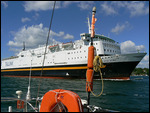
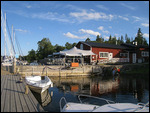



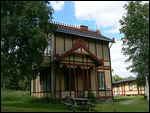

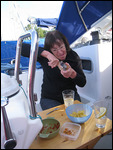
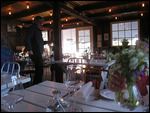
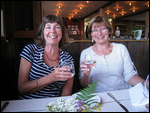
2025-05-22